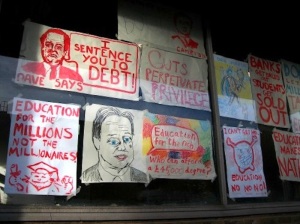After my rather long silence, an uncharacteristically short post.
We gathered, on an unusually warm day for January, at the London College of Communication in Elephant & Castle for the third seminar convened by the Artists’ Moving Image Research Network, with Pratap Rughani and Catherine Elwes as our hosts, to talk about the relations and tensions between documentary, ethnographic film, and artists’ film and video. We ranged across a whole range of topics from the ethics of representation—Pratap spoke about the film-maker’s relation to the subject—to the teasing out of meanings from the archives: Catherine Russell spoke about Los Angeles Plays Itself and The Exiles, and Laura Mulvey talked about Madame Dao. Hito Steyerl showed her video In Free Fall. Rachel Moore talked about Jean Epstein’s concept and practice of photogénie. Stan Frankland provided a trenchant and funny critique of Jean Rouch and a number of other targets, and Sean Cubitt summed up beautifully. What we’ve really been talking about, he suggested, was the problem of what can’t be seen as such, like culture, and the non-identity of the image, which I take to mean the import or sense in any image of what is not directly portrayed within it. Or to put it another way, what Wittgenstein would call the aspect of the image which can shift this way or that, especially according to the way the image is combined with others—and montage, of course, is the privileged mode of the film medium. (This ought to apply to sound as well, which unfortunately on this occasion remained a neglected topic.) Read more
